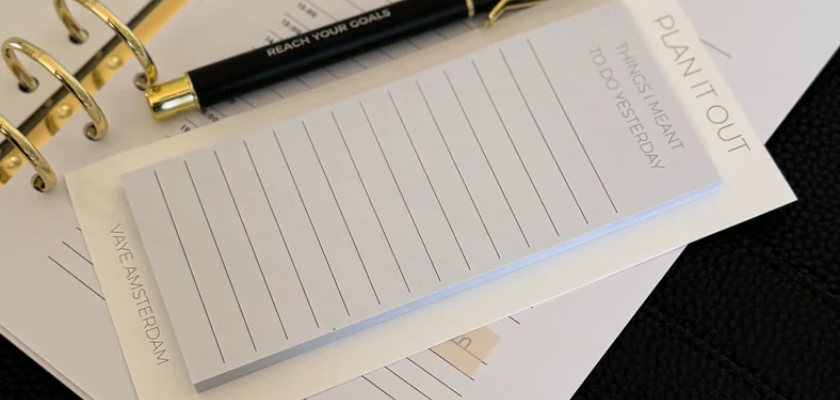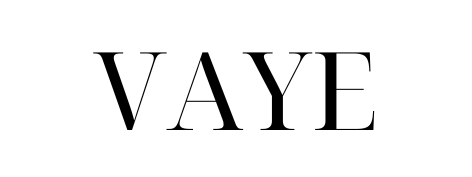
2025 reset: how to create a personal annual plan
Share
Creating a yearly plan sounds like a serious undertaking to many people. A list of goals, deadlines, and maybe even a bit of performance pressure. Not exactly something you look forward to, right? But there's another way. A yearly plan doesn't have to be boring or overwhelming. In fact, it can be a creative, inspiring, and even fun experience! How? By creating it in a way that works for you, so you'll want to refer back to it all year long.
In this blog post, you'll learn how to create a personal annual plan that's not only practical, but also motivating and fun to create. The result? A plan that will help you start 2025 full of energy and even carry over into 2026.
Why an annual plan?
A good annual plan provides direction and focus. It helps organize the chaos in your mind and transform big dreams into manageable steps. Most importantly, an annual plan gives you a sense of control over your time and energy. This plan is your guide for the year—but one that evolves with you. Not a rigid list, but a flexible document that inspires you.
Step 1. Start with inspiration
Creating a yearly plan doesn't have to start with a list. Instead, begin with a brainstorming session where you include everything—your dreams, desires, ideas. Don't be limited by what seems realistic. This is the time to dream!
How do you do this?
- Create a mood board: Gather images, words, and quotes that inspire you. You can do this physically on paper or digitally using a tool like Pinterest or Canva. Your mood board will give visual energy to your plans.
- Write freely: Set a timer for 10 minutes and write down everything you want to do, experience, learn, or achieve in 2024. Nothing is too crazy!
- Choose a theme or focus word: What do you want 2024 to mean for you? Think of words like "balance," "adventure," or "growth." This theme can serve as a guide as you make your plans.
Step 2. Make it visual
An annual plan doesn't have to be a boring bullet list. It becomes much more fun and engaging when you make it visual. A visual plan encourages you to look at it often, which keeps you motivated.
Tips to make your annual plan visual
- Work with color codes: Use different colors for different categories such as work, personal growth, health, and relationships.
- Use diagrams: Think of mind maps, timelines or charts to create an overview.
- Choose a nice planner or notebook: Or create your plan digitally in a tool like Notion, Trello, or Google Docs. A beautiful layout makes all the difference.
Step 3. Make it small
A yearly plan can feel overwhelming if it's too big. The trick? Break it down into smaller pieces. By dividing your goals into months or quarters, they remain manageable.
How do you break down your annual plan?
- Think in quarters: Divide the year into four parts and set goals for each quarter. For example: focus on health in Q1, on a career project in Q2, and so on.
- Create mini-goals: For example, if a yearly goal is to write a book, break it down into monthly or weekly achievable steps, such as writing 500 words per week.
- Schedule evaluations: At the end of each quarter, schedule a time to reflect on your progress. What went well? What could be improved?
Step 4. Make it personal
Your annual plan only works if it truly aligns with your values, desires, and lifestyle. This isn't a checklist of things you think you should do because others do them. This plan is entirely yours.
How do you personalize your annual plan?
- Listen to your intuition: Set goals that you really want, not what you think you should want.
- Use personal memories: Add quotes, photos, or other personal elements to your plan to make it meaningful.
- Allow for flexibility: Life is unpredictable. Let your plan adapt to unexpected changes.
Step 5. Consistency
An annual plan that ends up in a drawer is of little use. The secret is to keep it alive. That means regularly reviewing it, updating it, and celebrating your achievements.
Ways to keep your annual plan alive:
- Schedule monthly check-ins: Set a reminder in your calendar to review your annual plan monthly. Look at what's going well and adjust as needed.
- Celebrate successes: Did you achieve a goal? Celebrate it! It doesn't have to be anything big—a small gift to yourself or a moment of pride is enough.
- Be flexible: Allow room to adjust goals or add new ones. An annual plan is not a contract, but a tool.
Example: a simple annual plan
Let's create an example to show what it might look like:
- Theme: Growth
-
Categories:
- Health: Exercise three times a week, 10,000 steps a day.
- Career: Complete an online course in the first quarter.
- Personal growth: Read a book every month.
- Relationships: Surprise a friend with a fun outing every month.
-
Quarterly goals:
- Q1: Building an exercise routine.
- Q2: Start a second course.
- Q3: Plan a summer vacation that aligns with your focus word “growth.”
- Q4: Reflections and plans for 2025.
Getting started with your personal annual plan
Now it's time to get started! Grab a notebook, open a planning tool, or schedule a cozy afternoon in your calendar to create your annual plan. Start brainstorming, make it visual, break it down into small steps, and keep it personal and flexible. Before you know it, you'll have a plan that not only inspires you but also helps you make real progress in 2025.
